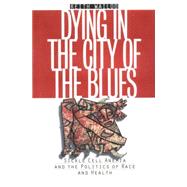
What is included with this book?
| Acknowledgments | vii | ||||
| Introduction. Pain and Suffering in Memphis | 1 | (24) | |||
|
25 | (30) | |||
|
55 | (29) | |||
|
84 | (23) | |||
|
107 | (30) | |||
|
137 | (28) | |||
|
165 | (32) | |||
|
197 | (28) | |||
| Conclusion. Race against Disease | 225 | (10) | |||
| Notes | 235 | (92) | |||
| Primary Sources | 327 | (2) | |||
| Index | 329 |
The New copy of this book will include any supplemental materials advertised. Please check the title of the book to determine if it should include any access cards, study guides, lab manuals, CDs, etc.
The Used, Rental and eBook copies of this book are not guaranteed to include any supplemental materials. Typically, only the book itself is included. This is true even if the title states it includes any access cards, study guides, lab manuals, CDs, etc.
Throughout history, numerous diseases have been used to draw attention to the African American body and to represent particular aspects of the "African-American condition." In the 1850s southern physician Samuel Cartwright invented "dyaesthesia Aethiopis," a disorder that he claimed caused "obtuse sensibility of the body" and insensitivity "to pain when subjected to punishment" in slaves. The "disease" was a convenient invention, for it could be used to highlight just how different enslaved blacks were from their white owners. Biological difference could be used to excuse plantation whippings and to explain the excessive brutality of slavery.[1] Throughout the nineteenth and twentieth centuries many other conditions, syndromes, and pathologies among blacks--from tuberculosis to venereal disease--have been used similarly to moralize about African American status, sexuality, intelligence, education, or economic condition. Whether these discussions focused on what we term "real" pathologies or invented ones, the discourse of "Negro disease" has always reflected deeper moral quandaries in society. Were black people degraded by or biologically suited to slavery? Was black sexuality a danger to whites and to society? Were black people sicker because they were innately different, or because they were kept socially unequal in America? The stories of particular maladies have been mined and interpreted throughout history because they appear to provide the answers to such questions.
The discourse of black disease has often been stigmatizing and controversial, but occasionally narratives of black pathology have also been uplifting. In 1930, for example, a blues guitarist with the stage name of Memphis Minnie brought an obscure disorder into public light, seeking to sow the seeds not of fear or revulsion but of compassion toward ailing African Americans. In her "Memphis Minnie-jitis Blues," the artist Lizzie Douglas sang:
My head and neck was painin' me
Feel like my back would break in two
My head and neck was painin' me
Feel like my back would break in two
Lord I had such a mood that mornin'
I didn't know what else there was to do.[2]
In the lyrics that followed, Douglas sang of the excruciating pain of meningitis, the diagnostic confusion of the doctor, and the enduring faith of her companion. The lyrics dramatized a common, often epidemic, disorder in the South, asking the listeners for sympathy and understanding.
Depending on the time, the context, and the interpreter, the performance of pathology could point in many different directions. The conception of "racial diseases" has provided physicians, patients, and performers ample, ever-changing material for debating race relations in America. From tuberculosis to venereal disease to meningitis to AIDS, the ways in which diseases are defined, characterized, and dramatized provide a window on social relations and social values.
Read the complete introduction.
Excerpted from Dying in the City of the Blues: Sickle Cell Anemia and the Politics of Race and Health by Keith Wailoo
All rights reserved by the original copyright owners. Excerpts are provided for display purposes only and may not be reproduced, reprinted or distributed without the written permission of the publisher.